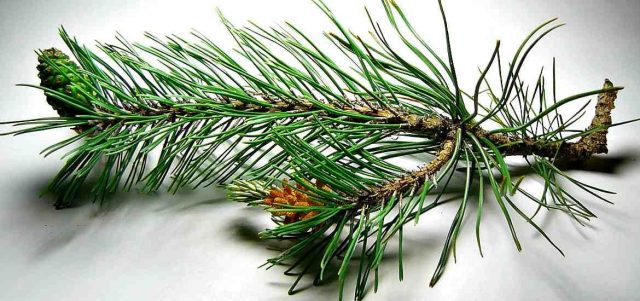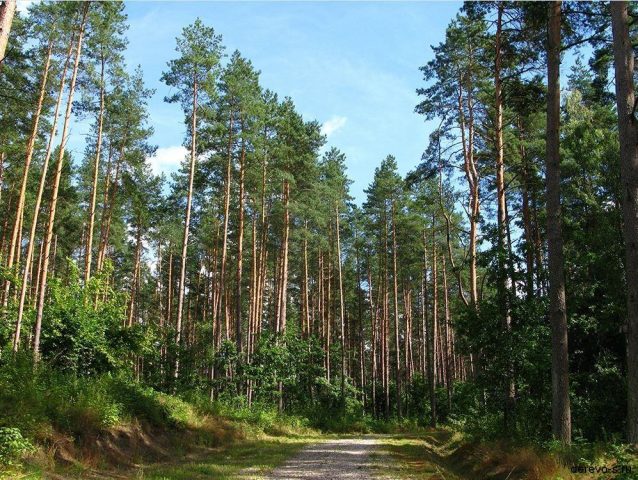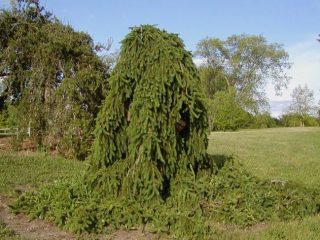Content
- 1 Differences in the places where pine and spruce grow
- 2 What is the difference between a Christmas tree and a pine tree?
- 3 Common signs of Christmas tree and pine
- 4 Which is better - pine or spruce?
- 5 Features of caring for spruce and pine
- 6 What a pine tree and a Christmas tree look like: photo
- 7 Conclusion
Spruce and pine are fairly common plants in the former CIS countries, but some people sometimes find it difficult to determine which genus a particular conifer belongs to. Meanwhile, figuring out how spruce differs from pine is not so difficult.
Differences in the places where pine and spruce grow
Although, at first glance, it may seem that pine and spruce have virtually no differences, but in fact this is far from the truth. Indeed, these conifers have a number of common features, since they belong to the same family and class of plants, but there are not as many of them as is commonly believed, and there are much more differences.
Thus, Scots pine grows mainly in regions of the temperate climate zone, which are characterized by cold and wet weather conditions. It is widespread in the northern regions of Russia, the USA and Canada. Periodically, the plant can be found in southern Mongolia and China.
Norway spruce partially shares territory with pine, however, unlike the latter, it belongs to more heat-loving crops.In addition to central Russia, Canada and the United States, its habitat also includes some countries of Eastern Europe and Central Asia.
What is the difference between a Christmas tree and a pine tree?
However, the place of growth is not the only difference between these coniferous species. They also have many differences in appearance: the shape of the crown, the general appearance of the cones, the color of the bark. All these features can be noticed even with the naked eye, if you know what you need to pay attention to.
Size of pine and spruce
As a rule, the difference in height between pine and spruce is not too noticeable. Scots pine reaches an average height of 25 - 40 m, which is approximately equal to the size of spruce, which grows up to 30 m. However, unlike pine, the size of spruce has great variability. Thus, among the representatives of this breed there are both relatively short specimens - up to 15 m in height, and real giants - 50 m and above.
Much more interesting is the height at which the needles of these plants are located. Thus, in a pine tree the crown begins at a distance equal to approximately half the entire length of the trunk, while the spruce needles begin to grow almost above the ground.
Pine and spruce cone size
Differences between plants are also manifested in the structure of pine and spruce cones. In both breeds, the cones are divided into male and female, but in appearance they are very different from each other.
Male pine cones are small in size, comparable to a cherry pit, and have a yellowish color. Female inflorescences can be difficult to notice, since they are even smaller and are located at the end of the pine whorl.
Female fir cones, on the contrary, are many times larger than male ones: they can be easily recognized by their bright red color. They are also located at the tips of the branches, but are located in the upper part of the crown.But male fir cones cannot boast of bright colors and large sizes.
Shape of pine and spruce needles
The needles of spruce and pine also have significant differences. One of the differences between these tree species is related to the period of needle change.
Thus, many people are accustomed to thinking that evergreen plants retain their leaf blades throughout the year. In the case of spruce this is partly true. The needles of this tree fall off gradually, being replaced by new needles every 7 - 12 years.
But pine, surprisingly, like deciduous trees, sheds most of its needles by autumn. As a result, pine needles are able to completely change within 1 - 2 years.
Differences between pine and spruce are also observed in the length of the needles. Upon closer examination, the leaf plates of spruce have the shape of a tetrahedron, the size of which ranges from 2 to 3 cm. In addition, forming a whorl, they are attached to the branches one by one.
Pine needles, unlike spruce needles, have a smoother structure and taper towards the end. They are located in pairs on the branches and reach a length of 4–6 cm.
Coloring of pine and spruce needles
Even the color of the needles of the plants in question differs. Spruce needles are characterized by a rich dark green color that does not change throughout the life span of the leaf blades. Pine needles are dominated by lighter shades of green. In addition, it, unlike spruce needles, tends to turn yellow closer to autumn, acquiring a copper color.
Life expectancy of pine and spruce needles
The life expectancy of these conifers also differs. It is believed that the average age of pine is about 300 - 350 years, while spruce lives slightly less - 207 - 300 years.
However, both breeds have their own long-lived lives, several hundred times the expected age limit. Thus, in Sweden there is a spruce nicknamed “Old Tikko”, whose root system is at least 9550 years old. And in the USA, in Inyo County, a pine tree was discovered whose age was close to 5,000 years.
Root system of spruce and pine
In addition to their appearance, pine and spruce have other differences. In particular, we can talk about the characteristics of the root systems of these trees.
Pine has a taproot system. It is very powerful and has many branches that spread outward from the thick taproot. Thanks to this structure, the plant is very unpretentious to the soil and can grow almost anywhere. In particular, this is facilitated by the main root, which lies at a great depth and provides the tree with moisture even on sandy and clay soils.
Spruce also has a taproot system, but, unlike pine, the main load falls on the lateral roots, since the main root atrophies when the tree reaches 10 years of age. The lateral shoots of the rhizome are capable of supplying the plant with the necessary substances for survival, but they are located closer to the surface of the earth than the roots of the pine. For this reason, you can often see a spruce covered in strong winds.
Common signs of Christmas tree and pine
Despite the obvious differences, it's easy to understand why some people are confused when it comes to comparing pine and spruce. These trees do have some similar features that make them difficult to identify:
- Both plants belong to the Pine family, Coniferous class.
- The cones of both breeds, with all their differences, have a common feature: during the ovary period they are located vertically on the branches, and during ripening they acquire a horizontal position, as if leaning towards the ground.
- Pine and spruce needles also have common characteristics. In both trees, the leaf plates are represented by narrow needles, which, moreover, have a similar color
- Both tree species produce phytoncides compounds, which have antibacterial properties.
- These plants can be considered trees of the first magnitude, since their height exceeds 20 m.
- The wood of these conifers is valuable for construction and industry.
- Needles, bark, resin and other parts of these varieties of conifers are actively used in medicine and cosmetology.
Which is better - pine or spruce?
The main differences between pine and spruce make these tree species unique and set them apart from other representatives of the flora. Both plants perform an excellent decorative function and are capable of pleasing the eye throughout the year. It is difficult to say which of them is better suited for decorating a park area or a personal plot: it depends on the goals that plant growers set for themselves and on their own preferences.
But no matter what the choice is based on, you should pay close attention to the recommendations for caring for these trees, since certain differences can be traced in agricultural practices.
Features of caring for spruce and pine
Since these conifers are quite different, it is reasonable to assume that their care requirements will also differ. This mainly manifests itself in the watering regime and the choice of location for planting trees.
As mentioned above, pine is unpretentious to soils and easily adapts to life in rocky or wetlands and other places that are not rich in fertile soils. It tolerates dry conditions well, is frost-resistant, and is not afraid of wind and heavy rainfall. However, for all its durability and vitality, the tree has difficulty growing in areas where there is a lack of sunlight. Therefore, when choosing a planting location for a plant, preference should be given to well-lit areas where there is no shadow at all.
Spruce is no less hardy and also undemanding in terms of soil quality. It has enviable frost resistance, and, unlike pine, it feels good even in places with extensive shade. A key condition for the well-being of this breed is proper watering. When growing spruce on your site, it is extremely important to ensure that the soil underneath is not too wet or too dry. Otherwise, it will begin to rapidly wither, and its root system will become vulnerable to diseases and pests.
If the basic conditions are met, then both representatives of the conifers will not be subject to infection and will serve as decorative decorations of the landscape for many years.
What a pine tree and a Christmas tree look like: photo
Having studied the characteristics of spruce and pine, you can easily distinguish these two tree species in the photo.
Norway spruce:
Scots pine:
Conclusion
Having figured out how spruce differs from pine and what the characteristics of these species are, you can competently provide conditions for growing these beautiful trees with high decorative properties on your land.


















